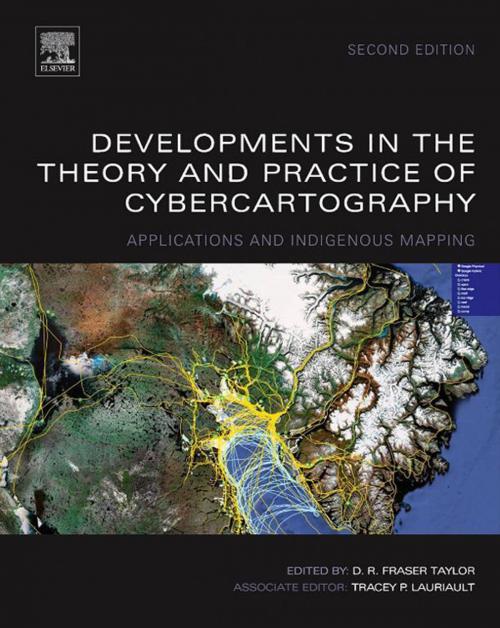Developments in the Theory and Practice of Cybercartography
Applications and Indigenous Mapping
Nonfiction, Science & Nature, Technology, Cartography, Science, Earth Sciences| Author: | ISBN: | 9780444627179 | |
| Publisher: | Elsevier Science | Publication: | December 17, 2013 |
| Imprint: | Elsevier Science | Language: | English |
| Author: | |
| ISBN: | 9780444627179 |
| Publisher: | Elsevier Science |
| Publication: | December 17, 2013 |
| Imprint: | Elsevier Science |
| Language: | English |
Developments in the Theory and Practice of Cybercartography—awarded an Honorable Mention in Earth Science at the Association of American Publishers' 2015 PROSE Awards—examines some of the recent developments in the theory and practice of cybercartography and the substantial changes which have taken place since the first edition published in 2005. It continues to examine the major elements of cybercartography and emphasizes the importance of interaction between theory and practice in developing a paradigm which moves beyond the concept of Geographic Information Systems (GIS) and Geographical Information Science.
Cybercartography is a new paradigm for maps and mapping in the information era. Defined as "the organization, presentation, analysis and communication of spatially referenced information on a wide variety of topics of interest to society," cybercartography is presented in an interactive, dynamic, multisensory format with the use of multimedia and multimodal interfaces.
The seven major elements of cybercartography outlined in the first edition have been supplemented by six key ideas and the definition of cybercartography has been extended and expanded. The new practice of mapping traditional knowledge in partnership with indigenous people has led to new theoretical understanding as well as innovative cybercartographic atlases. Featuring more than 90% new and revised content, this volume is a result of a multidisciplinary team effort and has benefited from the input of partners from government, industry and aboriginal non-governmental organizations.
- Honorable Mention in the the 2015 PROSE Awards in Earth Science from the Association of American Publishers
- Highlights the relationship between cybercartography and critical geography
- Incorporates several new cybercartographic atlases produced in cooperation with Inuit and First Nations groups
- Showcases legal, ethical, consent and policy implications of mapping local and traditional knowledge
- Features an interactive companion web site containing links to related sites, additional color images and illustrations, plus important information to capture the dynamic and interactive elements of cybercartography: http://booksite.elsevier.com/9780444627131/
Developments in the Theory and Practice of Cybercartography—awarded an Honorable Mention in Earth Science at the Association of American Publishers' 2015 PROSE Awards—examines some of the recent developments in the theory and practice of cybercartography and the substantial changes which have taken place since the first edition published in 2005. It continues to examine the major elements of cybercartography and emphasizes the importance of interaction between theory and practice in developing a paradigm which moves beyond the concept of Geographic Information Systems (GIS) and Geographical Information Science.
Cybercartography is a new paradigm for maps and mapping in the information era. Defined as "the organization, presentation, analysis and communication of spatially referenced information on a wide variety of topics of interest to society," cybercartography is presented in an interactive, dynamic, multisensory format with the use of multimedia and multimodal interfaces.
The seven major elements of cybercartography outlined in the first edition have been supplemented by six key ideas and the definition of cybercartography has been extended and expanded. The new practice of mapping traditional knowledge in partnership with indigenous people has led to new theoretical understanding as well as innovative cybercartographic atlases. Featuring more than 90% new and revised content, this volume is a result of a multidisciplinary team effort and has benefited from the input of partners from government, industry and aboriginal non-governmental organizations.
- Honorable Mention in the the 2015 PROSE Awards in Earth Science from the Association of American Publishers
- Highlights the relationship between cybercartography and critical geography
- Incorporates several new cybercartographic atlases produced in cooperation with Inuit and First Nations groups
- Showcases legal, ethical, consent and policy implications of mapping local and traditional knowledge
- Features an interactive companion web site containing links to related sites, additional color images and illustrations, plus important information to capture the dynamic and interactive elements of cybercartography: http://booksite.elsevier.com/9780444627131/















